Signs Of Mold Under Hardwood Floors – Suspicious Signs 2024
If you want to indicate the signs of mold under hardwood floors, this is the post for you. Mold will affect the quality of your house’s structure and your health. Diagnosing all the mold symptoms on the floor will help prevent it from growing and spreading.
I will also show you the best way to remove the mold if they are infested in your house. Make sure you stay with me till the end of this post.
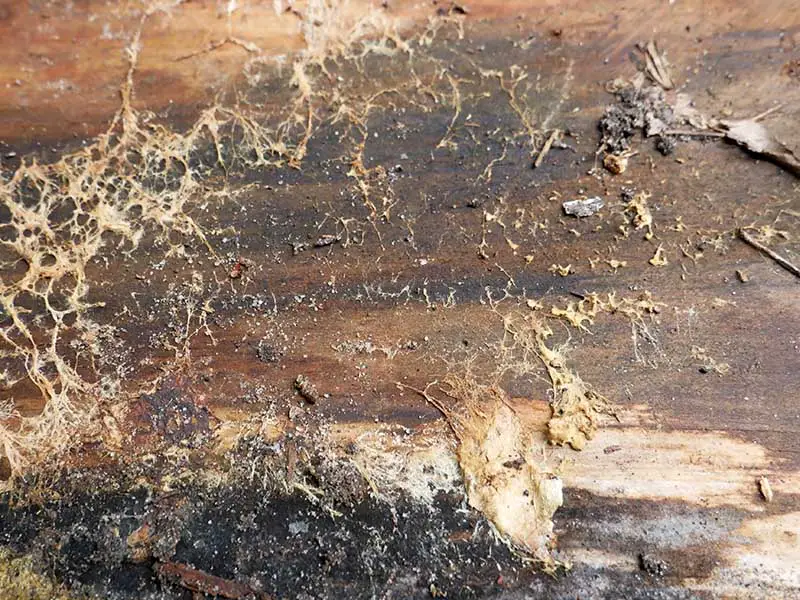
Mold Under Hardwood Floors – A Thread For Your Health And House
Hardwood is a natural material that mold can feed on. Its porous surface can capture moisture and humidity, forming a perfect environment for spores to land on and develop into mold.
If your wood floors are not sealed, even a tiny amount of moisture could lead to mold infestation. Always handle any moisture like spills or water puddles immediately so as not to stain or damage your wood floor. Cracks and warps will occur if you leave the problems untreated.
That said, molds feed on and digest hardwood gradually. As a consequence, the hardwood floor will start losing its quality. You have to replace the mold-infested floor planks with new ones as the previous planks are no longer valuable.
However, mold appearing on the subfloor of your house will gradually deteriorate the hardwood floor without you noticing it. As a result, the entire floor will be ruined before you start to get your hand on killing the mold.
The situation could worsen as molds spread their spores to other areas of your house. The structural damages caused by mold should not be underestimated, and you might have your whole floor fixed.
Recent research indicates that mold and its spores are the leading cause of specific health problems in humans. Asthma and other respiratory issues will turn to even more severe. A severe issue like lung bleeding can be triggered if exposed to mold for a long time.
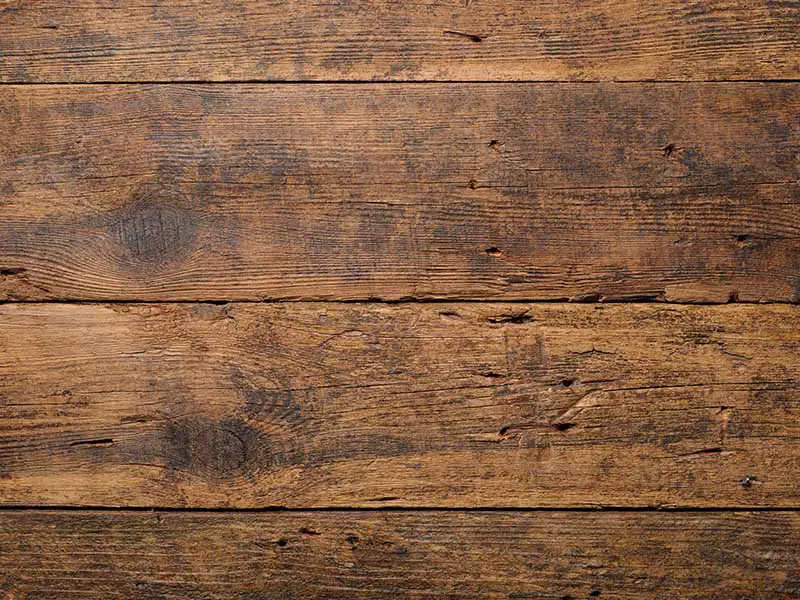
How Do I Know The Presence Of Mold Under My Floor?
So, to ensure that you know there is mold growing at the bottom of the floor, you have to understand what you are dealing with. Don’t hesitate; let’s get to know your enemy – the harmful mold.
Discolorations
Various species of mold could infest your wood floors. The appearance ranges from roughy, gooey to fuzzy with blue, black, white, and yellow colors. Certain types of mold just create discolorations or stains on the wood surface.
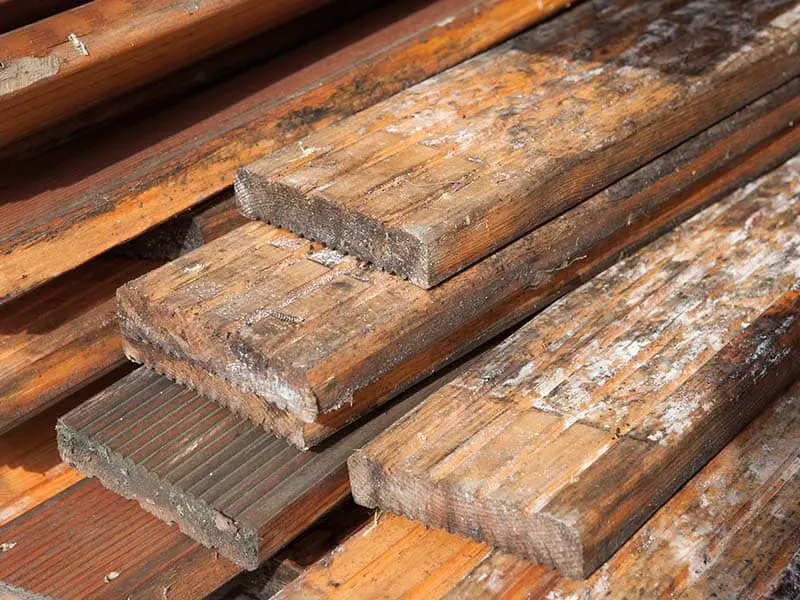
Molds usually form patches of colors on the hardwood surface. This is an assurance that the discoloration on the floor is caused by mold. So, if the floor has a mismatched look compared to its original appearance, you should get your hand on the problem now.
Here are some of the most common types of mold and their color.
If any discoloration happens on the hardwood floor surface, check under the floorboards immediately. You only need to remove a small part of the floor; if mold happens, you can handle all the floor.
Odors
Mold not only comes with discolorations under your floor but also an unpleasant smell. Any bizarre musty or earthy odor around your surroundings could be a sign of mold (1). As mold diggest the organic materials, its smell will remind you of decaying material.
For hardwood floors, mold will ooze gases that smell more like wet wood with a pungent earthy scent that will likely disturb your nose. Follow the smell; it will lead you to the source of infestation.
Structural Damages
As molds gradually eat up the floor, the material will show some signs of being ruined. Once your floor star shows the following symptoms, take action immediately because your floor is now badly infected.
- Cupping: Once the wood floor is penetrated by water, it will swell. Over time, the wood will begin to rise at the plank’s edges. So, if there is any ‘wavy’ appearance on the floor surface, your floor could be affected not only by water but also molds.
- Crowning: If moisture penetrates the hardwood floor’s center, the middle area will rise. When you see the middle of a hardwood plank rise higher than its edges, the star is crowning.
Even if you restore a cupped hardwood flooring plank by sanding, the floor could start crowning if the base is affected by moisture.
- Warping: When the water evaporates and floats around the area, it could cling to the hardwood surface from the underside and cause warps to the planks.
The flooring planks will begin to peel inches from their previous position. You will see that the space between the hardwood floor and the subfloor begins to expand.
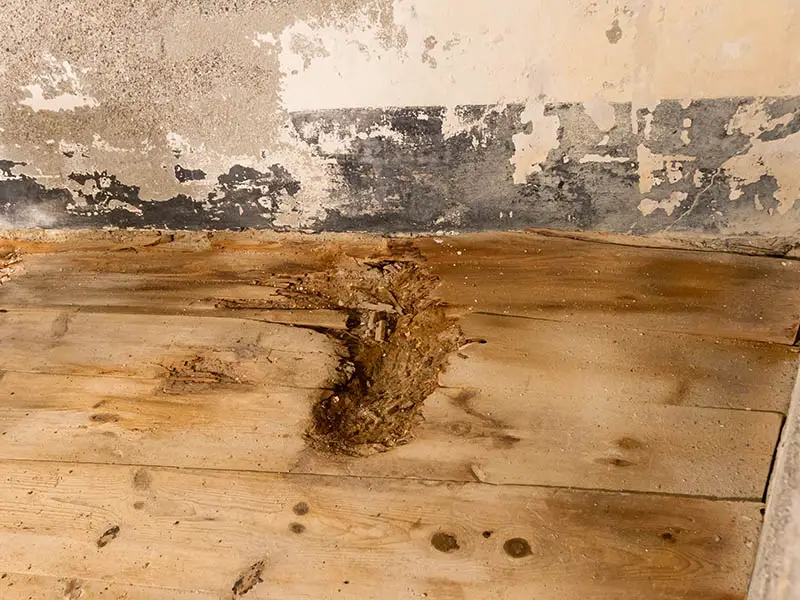
Moisture Problems
Usually, the signs of mold only become apparent when molds have developed for a certain amount of time. So, you should look out for the following moisture problems.
- Water condensation: When the water in the air meets cold temperature, it will turn to liquid form as water droplets. If the condensation appears frequently, the area must have excessive moisture levels.
So, check the humidity levels by using a thermo-hygrometer to prevent this from happening under your hardwood floor.
- Leaking pipes: Check your pipes systems frequently, especially in the basement or any hidden space.
- Water stains: Leaving water too long on the wood surface will create water stains on the floor and allow mold to grow on the material and penetrate the subfloor.
- Over-water your plant: If you grow any indoor plants, be careful when watering them. Too much water could harm your plant and allow mold to grow in the area.
- Spongy texture: Walk on the floor to check if there is any spongy underfoot feeling, the floor might be damaged by water, and mold is growing under the floorboards.
You should also check underneath the floor by removing the planks and looking under the area. You can ask an expert to do this for you. However, if you do it yourself, wear protective gear to protect yourself from mold.
If you want to ensure the situation, call a mold test detector to analyze the situation and measure the spores quantity on the air.
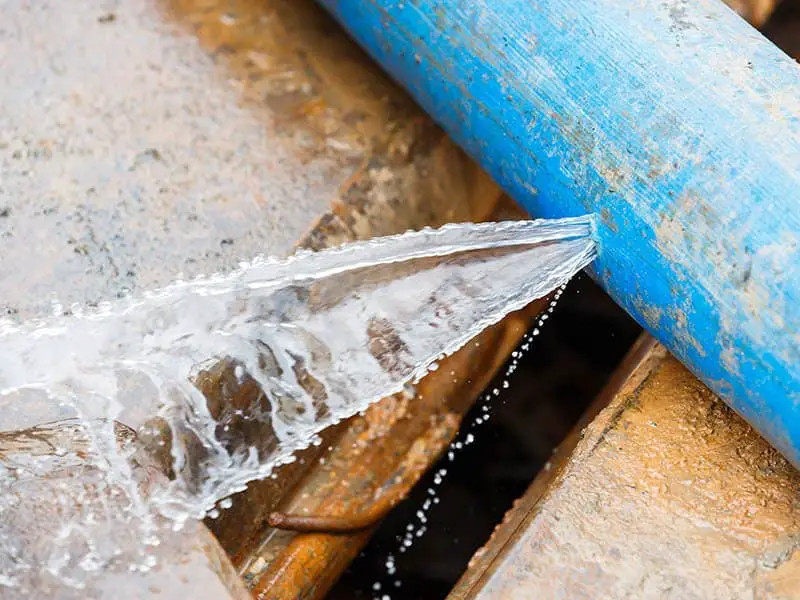
Insects Infestations
Insects like termites and carpenter ants can infest on wet wood, so the appearance of them around your house should warn you not only of the pest but also of mold infestation too. When you see them appear on the floor surface, there are many problems to deal with.
Health Issues
When mold appears on your house, you might have some allergic reaction to its spores. Specific types of fungus will trigger certain types of allergic symptoms. Runny nose, skin rash, and sneezing will be triggered if you inhale mold spores for a long time.
Asthma symptoms will become more severe when you live in an area infested with mold over time. The situation could worsen in children and the elderly, whose immune systems are vulnerable to unwanted pathogens.
Certain types of mold even release toxins. Stachybotrys chartarum (the black, green mold) is proven to be connected to pulmonary bleeding or even death as it can release mycotoxins. This toxin is highly harmful to humans.
I hope that these health problems will motivate you to check and remove molds immediately.
Top 9 alarming signs that your house is infested by mold.
Useful Tips For Indicating Mold On The Bottom Of Hardwood Floors
Here are some incredible tips that you could apply while inspecting if your hardwood floors are infested by molds or not.
Tape Lift Sampling
This way of testing will show you if the wood material is infested by molds or not. Just apply the tape on the suspicious areas and seal the tape. Send the sample to an expert for analysis. The test kit is handy if you don’t want to lift up all the flooring planks to inspect the mold.
Swab Sampling
Buy a swab test kit and let test if your subfloor is affected by mold or not. Gently prying up the flooring planks, swipe the swab around the area. You can run a HEPA air purifier nearby to get rid of the spores.
Put the sample on the test plates, seal it, and send it to the expert to culture and analyze. Remember to HEPA vacuum the place after you take the sample. Have the sample tested by the expert, and you will know the status of your hardwood floors.
A helpful guide on testing if your floor has mold or not.
Let’s Get Rid Of The Harmful Mold Underneath The Hardwood Floor
After you have acknowledged that mold appeared under your hardwood floor, you have to deal with them right away. Don’t let the situation get worse. Let’s go!
Before Treating The Mold
Some vital preparation needs to be conducted before you get your hand on the infestation. These pre-treating steps are essential, do not miss them.
Protective Clothes And Equipment
That said, inhaling spores or exposure to molds for a long time will trigger specific allergic reactions and health issues. Put on an OSHA-approved particle mask, a pair of goggles, and rubber gloves to protect your respiratory system from these harmful pathogens.
Put on protective clothes like pants, long-sleeves, and rubber boots to protect your skin from direct exposure to mold. Don’t forget your hair; equip hair protection to avoid mold spores from landing on your hair.
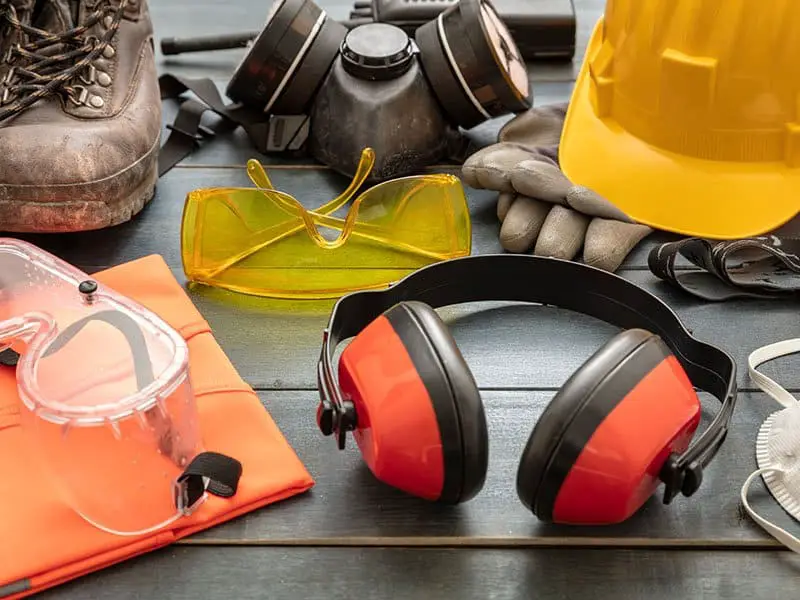
Make The Area Well-Ventilated
Open all doors and windows around the mold-infested area. Ensure that air can circulate around the space to minimize pores’ chance of being stuck in the area and start the infestation.
If you are cleaning the mold in the basement, place a dehumidifier in the area to reduce the moisture on the site while cleaning. You can utilize the device to balance the moisture for the post-cleaning procedure.
Place a fan toward the window and turn it on; it will boost the ventilation of the area and help blow the spores out of your house. Don’t blow at the mold, as this will spread them to other non-affected areas of your home.
Set Up The Mold-Contaminated Area
Cover large, heavy furniture in the room with plastic bags (garbage bags will also work). The bags will protect the object from being contaminated by mold spores. Move smaller objects to another room, ensure that you empty the affected area for better cleaning.
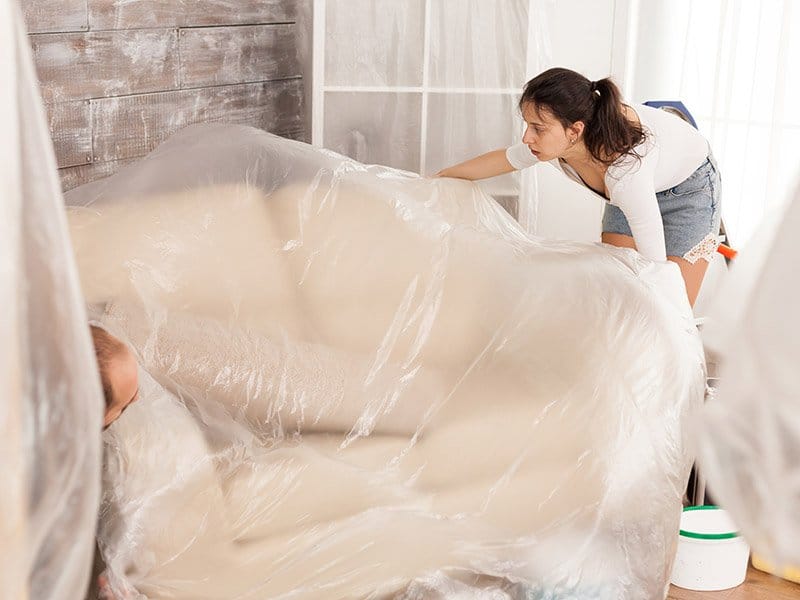
If it is a sunny day, you could leave the objects under the sun as the UV rays could help kill spores on the furniture surfaces.
If doors or HVAC filters of the affected room lead to another room, seal all the entrances by hanging plastic sheets to isolate the area. This will prevent molds or spores from spreading to other areas.
Place clean shoes outside of the room so you can use them to move among different areas without spreading mold from the affected space to other places.
Step-By-Step On Removing Mold Below Hardwood Floor
In order to kill mold, there are various methods you can try. Feel free to choose the method that fits your needs.
Warning:
- Always spot test any remedy you attempt to use on a hidden part of the hardwood floor. If any damage or discoloration happens, stop using the product.
- Bleach is not recommended for cleaning mold on porous surfaces like wood; as a result, it will not meet the expectation (2). So, don’t use this chemical on wood surfaces.
Borax
Borax is really helpful in killing mold. The upcoming instructions will show you how to remove the flooring planks and treat molds with the borax solution. So, get a box of borax and save your hardwood floor now.
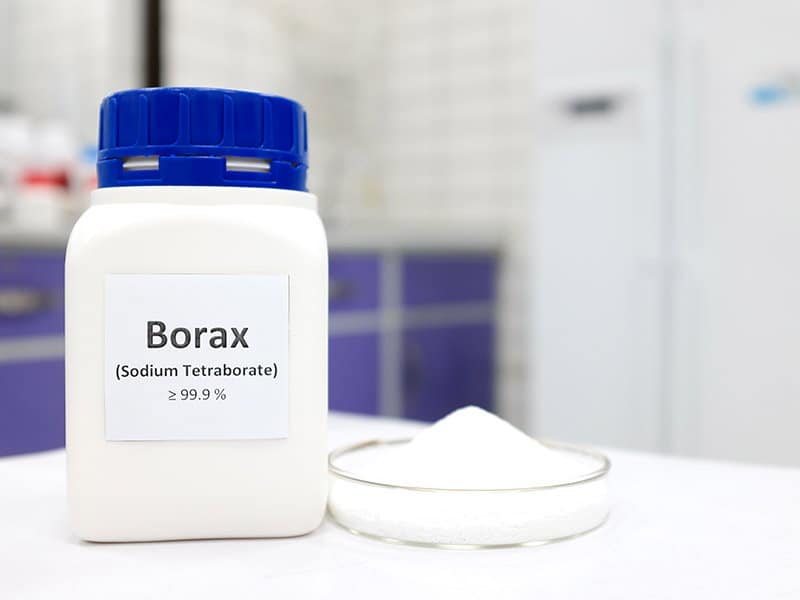
Preparation
- Buckets
- A pry bar
- Scrubbing brush (or a broom)
- Dehumidifier
- Borax
- A spray bottle
- Disposable rags
- A reciprocating saw
Instructions
Step 1: Use a pry bar to pick up the hardwood plank on the contaminated area. You should begin at the edge of the room toward the affected area. If you can locate the mold infestation, just patch the affected trims.
Note: Once you have uncovered the area, remove some extra flooring planks (one or two feet) to ensure that you don’t miss any section. You will have to remove the entire floor if the infestation is huge.
Remove the hardwood planks easily with this simple method.
Step 2: Wet the mold using a spray bottle fitted with water. This will stop spores from floating around the room.
Step 3: Separate the badly infected planks with the lightly infected ones. You can clean, sanitize and restore the usable planks later on. Dispose of the heavily infested planks to stop the infestation.
Step 4: Create a cleaning solution from 1 cup of borax and 1 gallon of water in a bucket. Here are two approaches for different sizes of infestations:
- Small infestations: Pour the solution into a spray bottle and spritz it on the area.
- Large infestations: Damp a broom in the solution, wring out the excess water, and work the broom on the subfloor.
Step 5: Let the solution work on the affected area for 15 minutes. The borax will gradually break down the mold and stop it from releasing its spores.
Note: Don’t over-wetting the subfloor and the non-affected flooring boards unless you want the mold infestation to reappear and go over the whole cleaning procedure again.
Step 6: Scrub the mold-infested subfloor with a scrubbing brush to knock the mold out.
Step 7: Apply the solution one more time on the subfloor for roughly 10 minutes. Repeat scrubbing until the mold is entirely removed from the affected subfloor.
Step 8: Create another bucket of borax solution. This time, you use the solution for the mold-infested planks. Apply the borax solution on the planks and let it sit for 10 minutes.
Step 10: Scrub the board thoroughly to clean any remaining mold on the boards.
Quick tip: You should clean the affected boards on the subfloor to utilize the excess solution. The abundant borax will fall while cleaning and treating the subfloor one more time.
Step 11: Remove the dead mold using disposable rags with borax solution. Keep using the new rag if needed.
Quick tip: A HEPA vacuum can also help clean the dead mold as the device has an attachment designed for this job.
Step 12: Retreat the area and the wood planks with a new borax solution. Leave the solution dry on the affected area for two days.
Step 13 (Optional): Place a dehumidifier in the affected room and run it at a high temperature to control the humidity and speed up the drying time.
Step 14: Install the hardwood flooring planks again when the area dries out. Utilize the restored ones and replace the damaged planks with new ones.
Step 15: Spray the furniture and all other objects with borax before you put them in the room.
Note: If mold has penetrated to the subfloor, you might have to replace the joints too. Treat the mold with the solution and cut the floor using a reciprocating saw.
Dispose of the mold-infected parts of the material in a garbage bag. Install the new subflooring and screw each 10 inches long across the new floor joists.
A detailed guidance on replacing the rotten subfloor.
Vinegar
Besides borax, distilled white vinegar is another effective remedy to kill mold on hardwood floors. Vinegar can kill fungus and deodorize your floor. Plus, the ingredient is natural and friendly to use.
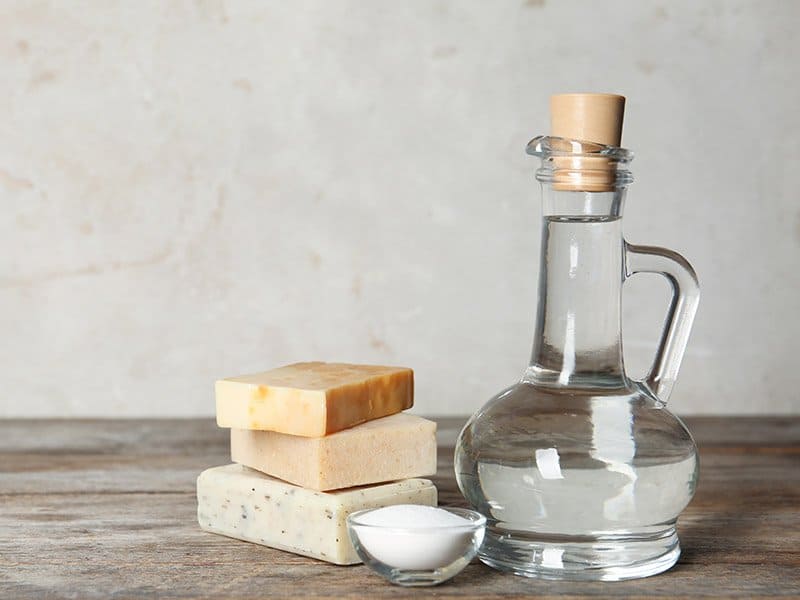
Preparation
- Distilled white vinegar
- Water
- Disposable cloths
- Spray bottle (small infestation)
- A bucket (large infestation)
- Vacuum
- A pry bar
- A brush
Instructions
Step 1: Remove the flooring plans with a pry bar
Step 2: Dampen the mold with water.
Step 3: Separate the affected planks.
Step 4: Make a vinegar solution. Here are two recipes that you can use:
- For small infestations: In a spray bottle, blend ¼ cup of white vinegar and 1 cup of water.
- For larger infestations: 1 cup of white vinegar and 1 gallon of warm water in a bucket. Add 1 tablespoon of dish detergent or dish soap to boost the cleaning power.
Step 5: Apply the solution to the affected subfloor let the solution sit for around 10 minutes.
Note: Don’t let the vinegar sit on the mold for too long, as this ingredient can damage the hardwood floor.
Step 6: Scrub the mold-infested subfloor with a brush using a circular motion. You can also wipe the mold out using disposable cloths. Throw the used clothes in a garbage bag right away and seal it.
Step 7: Repeat until you get all the mold out of the area. Keep on scrubbing to get all the stains remaining on the subfloor.
Step 8: Wait for another 10 minutes.
Step 9: Rinse the affected area from the solution with a clean cloth. Work the cloth until the room dries out.
Step 10: Open all windows and doors to dry the room faster.
Step 12: Treat the affected planks with the solution and reinstall the hardwood floor.
A quick way to handle water-damaged hardwood floors to prevent mold.
Alcohol
Alcohol can kill mold and overpower the odor smell with its strong scent. Alcohol is helpful as it can get rid of the mold and evaporate after a couple of minutes. So, this is a great option to minimize the moisture in cleaning.

Preparation
- A pry bar
- A nylon brush
- Alcohol
- A spray bottle (For small infestation)
- A bucket (For large infestations)
- Vacuum
Instruction
Step 1: Gently pick up the hardwood flooring planks using the pry bar.
Step 2: Spray a little water to dampen the moldy surface.
Step 3: Dilute 1 cup of alcohol into 1 gallon of warm water, then pour it in a spray bottle.
Note: You can use a bucket if the infestation is huge.
Step 4: Spray the solution on the small areas. If the area is larger, use a clean cloth and wipe the solution on the affected area. Let the alcohol work for 15 minutes.
Step 5: Brush the affected floor using a nylon brush until it is free of mold.
Step 6: Retreat the area with the alcohol solution for another 15 minutes.
Step 7: Repeat scrubbing and then rinse the area with water and let the floor air dry.
Step 8: Treat the mold-affected planks with the solution and scrub the mold out.
Step 9: Vacuum the area and re-apply the flooring planks.
Mold Remover
You can use a mold remover to clean mold under hardwood floors. Choose your favorite mold remover to clean the mold. Remember to pick a product that is non-toxic to your health. Follow the brand’s instructions carefully, and the mold will go away.
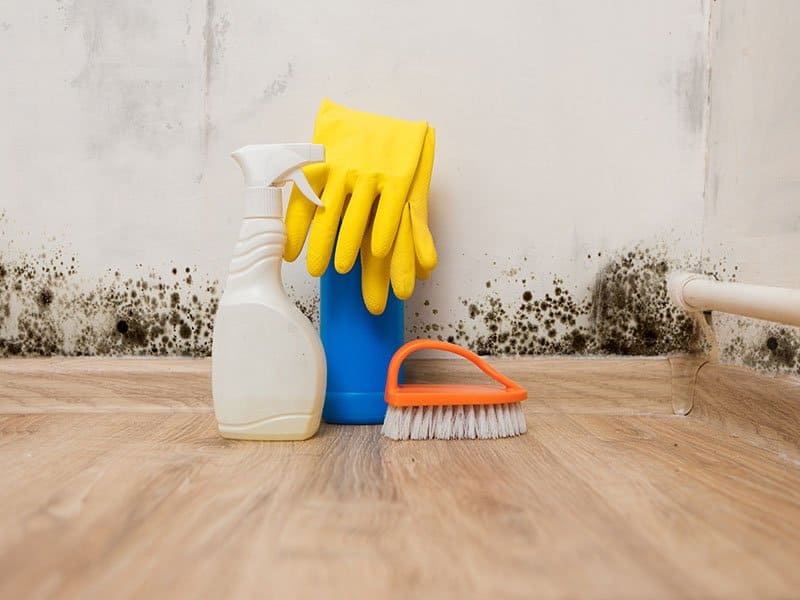
How Can I Prevent Mold Under Hardwood Floors?
So, to keep mold out of the hardwood floors, you should take note of the following tips below. Prevention is actually more helpful than treating the floor, so you must do this thoroughly.
- Check the humidity level with a thermo-hygrometer to ensure that you take control of the moisture level. Open the windows to let the air circulate the area; consider using a dehumidifier if the space has a high moisture level.
- Clean up any water spilled or puddles with a dry, clean cloth. Dry out the area as soon as possible after any moisture problems. Do this for leaks, floods, and serious water intrusion, don’t let water stand on the floor for more than 24 hours.
- Fix any cracks on the hardwood surface to prevent water from penetrating the subfloor.
- Check all the insulation systems around your house; if there is any damage to the insulation (any part falling out or losing), solve the problems now.
- Make sure that there are no water problems on the plumbing or air ducts.
- Take extra care of dark and dampen areas like the basement. Don’t place wood furniture or wooden objects in these areas.
- Remove any damp items right away. Don’t let it stand on the wood floors for too long.
- Protect the wood materials with a layer of sealant for a finisher. This protective layer will help the surface be resistant to moisture and scratches.
- If the mold infestation is massive and penetrates the floor for too long, contact a professional mold remover to handle the problem.
Prevent mold by handling the root of the problems.
FAQs
Hey, don’t miss this section. You will find tons of helpful information in this section. Let’s explore it with me.
Don’t Be Afraid Of The Harmful Mold
Mold can be hazardous to your health and the entire structure of your house, but when you know the signs and how to get rid of it, just stay calm and conduct a proper cleaning.
Good preparation and a precise approach will knock the mold out easily. Have you tried my suggested instructions? Share the result with me in the comment section. Thank you!
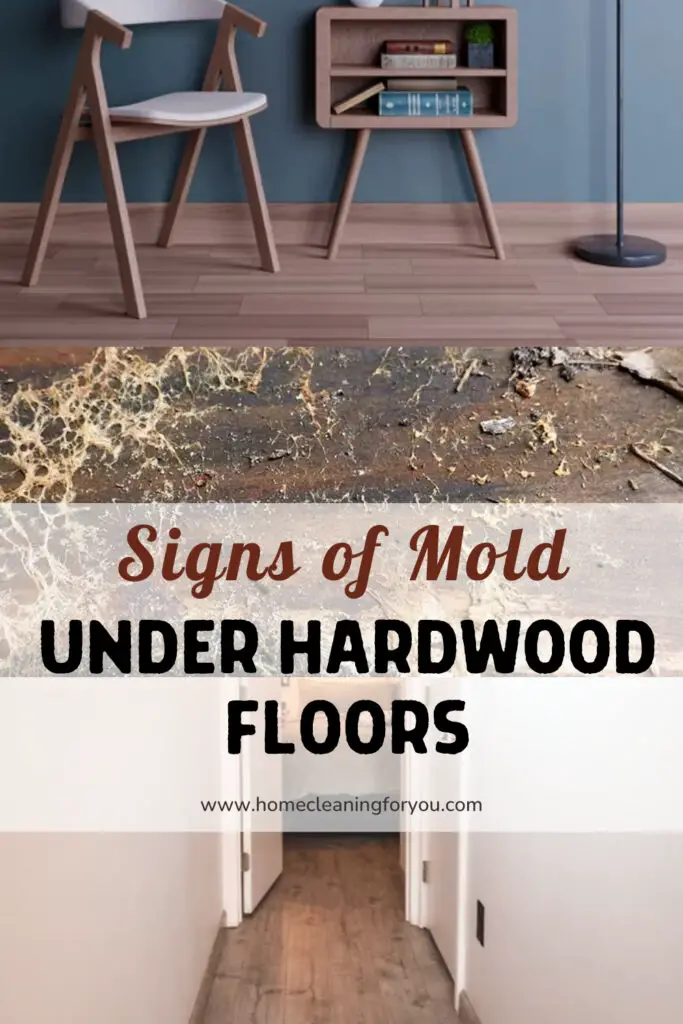
Reference
- US EPA. 2022. What does mold smell like? | US EPA.
- US EPA. 2022. Should I use bleach to clean up mold? | US EPA.

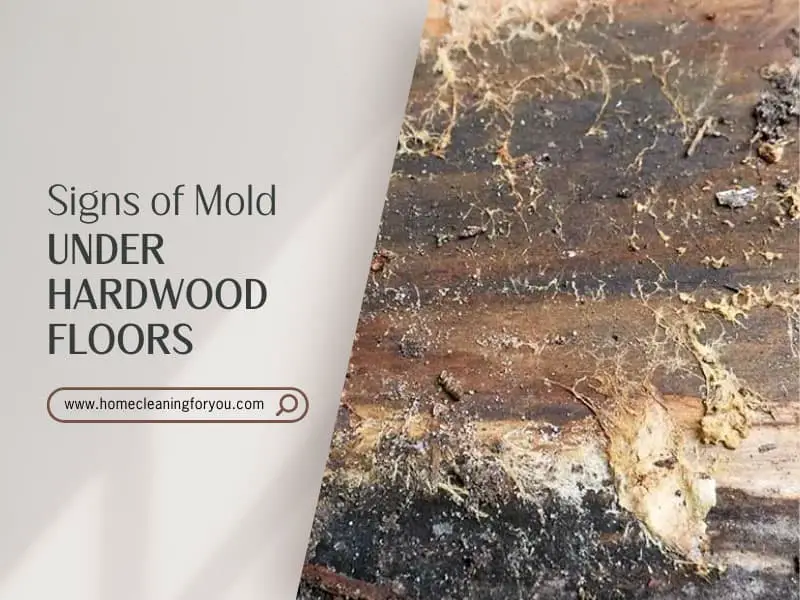
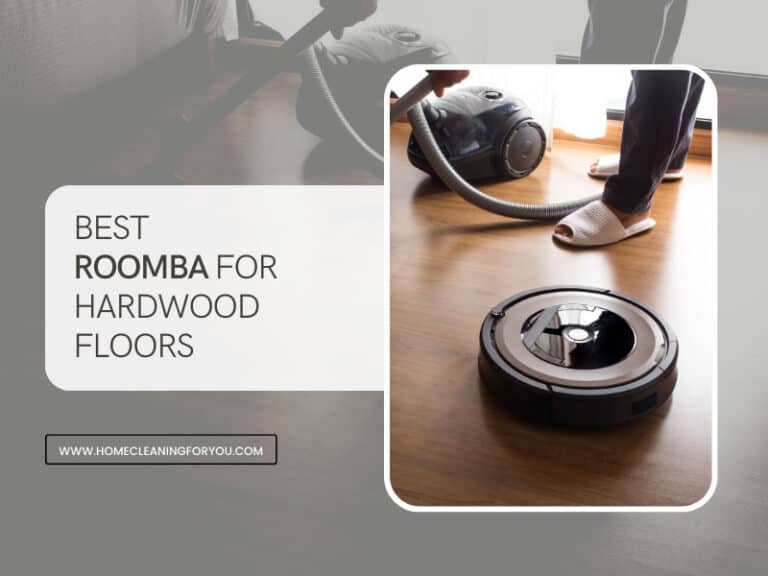
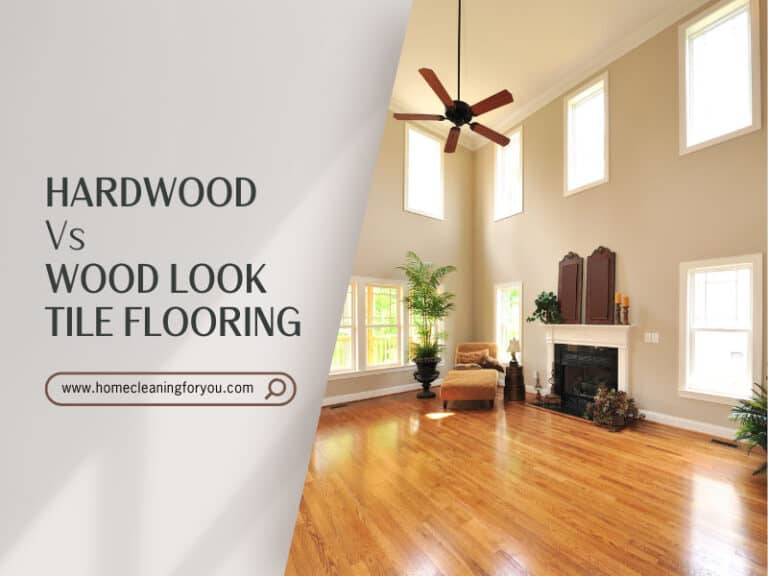
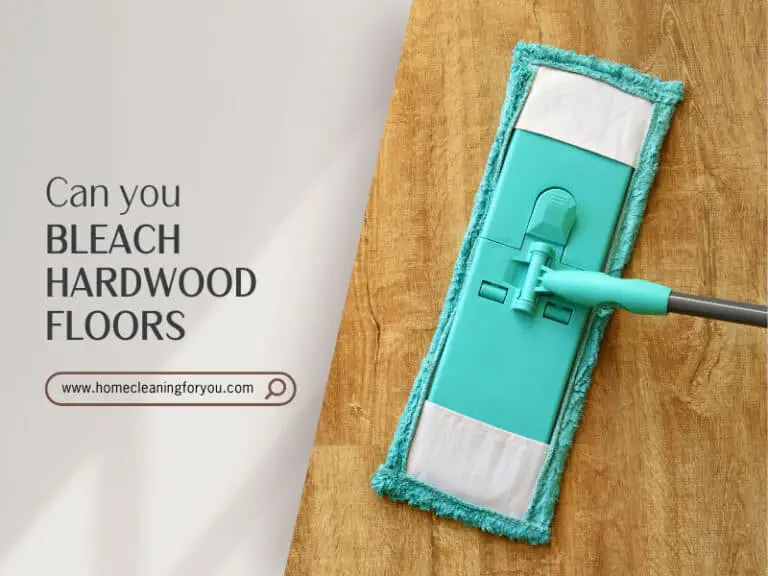
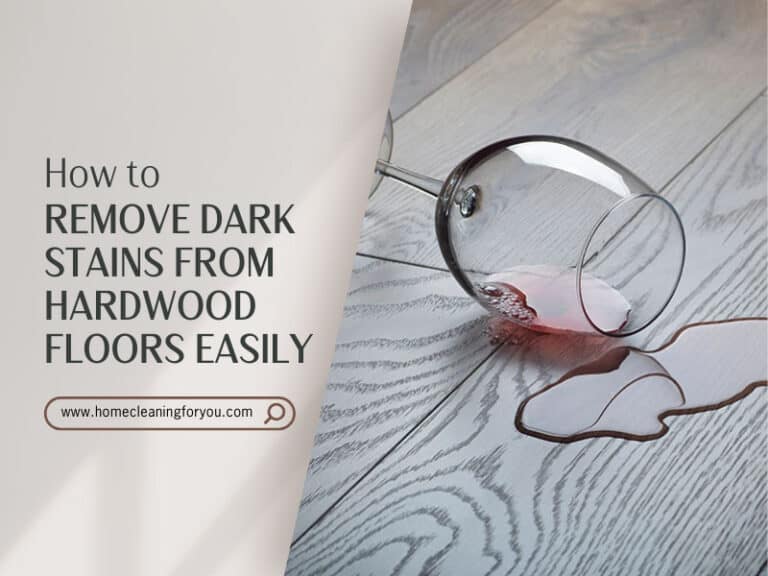
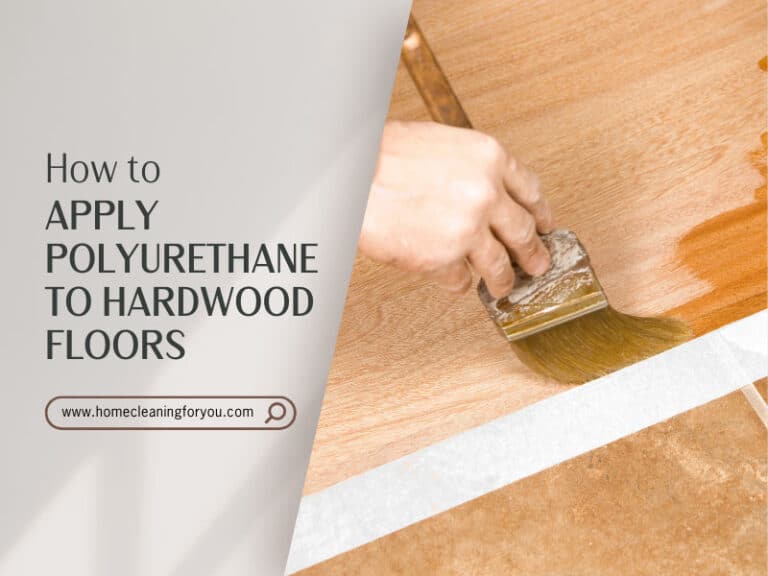
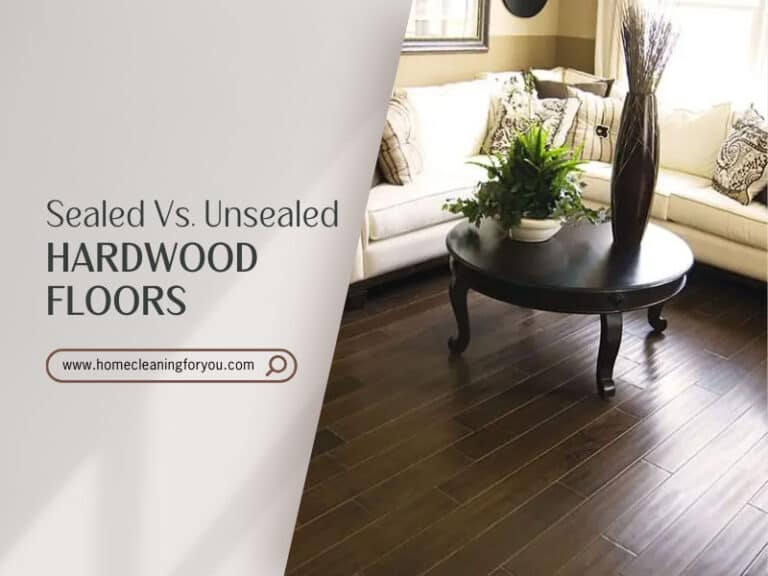
Kevin Jones
Home Cleaning Specialist
Expertise: In-depth Knowledge of Cleaning Agents and Their Uses, Advanced Home Sanitization, Techniques Expertise in Cleaning and Maintaining, Various Floor Types, Innovations in Home Cleaning Tools
School: American College of Home Economics
Kevin Jones is a seasoned home cleaning specialist with over a decade of experience in the industry. A stickler for cleanliness and organization, Kevin brings a systematic and innovative approach to home maintenance. His expertise ranges from traditional methods to modern cleaning technology, ensuring homes are not just clean but healthy environments too.